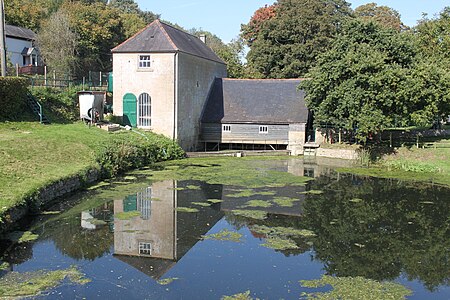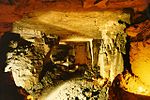Claverton Pumping Station

Claverton Pumping Station in the village of Claverton, in the English county of Somerset, pumps water from the River Avon to the Kennet and Avon Canal using power from the flow of the river. It is a Grade I listed building, having been upgraded from Grade II in 2019.The pumping station was built by John Rennie between 1809 and 1813 to overcome water supply problems on the canal. It uses a 24-foot (7 m) wide wooden breastshot water wheel to drive two Boulton and Watt 18-foot (5 m) long cast iron rocking beams, which power lift pumps to raise water 48 feet (15 m) up to the canal. The pumping station has undergone several modifications since its initial construction, including revising the wheel into two sections each 12 feet (3.7 m) wide separated by a 9-inch (23 cm) gap. The station's operational life ended in 1952, by which time its maintenance and repair had become uneconomical in the light of falling traffic on the canal. In the 1960s and 1970s restoration was carried out by students from the University of Bath and the Kennet and Avon Canal Trust, who replaced and repaired the buildings and equipment and returned the pumping station to a functional state by 1978. It is now owned by the Canal and River Trust and maintained by the Claverton Pumping Station Trust CIO, open to the public as an industrial heritage museum.
Excerpt from the Wikipedia article Claverton Pumping Station (License: CC BY-SA 3.0, Authors, Images).Claverton Pumping Station
Ferry Lane,
Geographical coordinates (GPS) Address External links Nearby Places Show on map
Geographical coordinates (GPS)
| Latitude | Longitude |
|---|---|
| N 51.378055555556 ° | E -2.3016666666667 ° |
Address
Claverton Pumping Station
Ferry Lane
BA2 7BH
England, United Kingdom
Open on Google Maps










